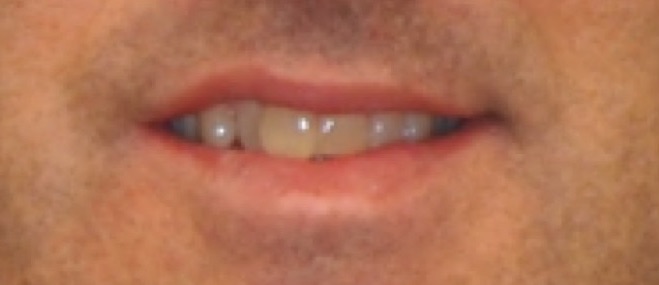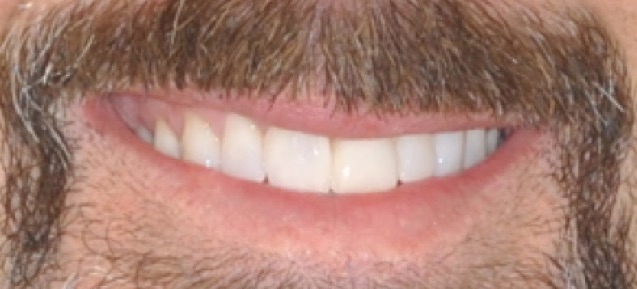
A Team Approach!
Adult treatment is not simple. In many cases, ideal treatment will require a coordinated effort between the orthodontist, the dentist, and the patient. Communication leads to the best treatment outcome, but it also takes experience to understand how teeth move, and what to predict. Here is a short checklist that we consider BEFORE treating adults:
Did you know certain medications may inhibit tooth movement altogether? Drugs called Bisphosphonates are used to treat Osteoporosis. These drugs can slow down or stop orthodontic tooth movement. Sometimes, alternative treatment to orthodontics must be considered when these medications are taken.
Dental implants are the gold standard to replace missing teeth. But implants CANNOT move orthodontically. This is why it is important to consider orthodontics BEFORE placing a dental implant. This takes a coordinated effort between dentist and orthodontist to gain the best result.
Crowded teeth in adults must be carefully evaluated. Support from the periodontium (gums and bone) may reduce when teeth are moved. With proper planning, these changes can be either minimized, or addressed by coordinating with the dentist and periodontist (gum specialist).
What is a “dark triangle?” It is a space that opens between crowded teeth at the gumline when the teeth are straightened. Knowing how to manage these spaces takes planning and experience.
Perhaps the most difficult challenge of orthodontic treatment, correcting worn or damaged teeth, requires ideal positioning for dental restorations. Knowing where to position the tooth, and how to move it takes experience, and excellent communication between the orthodontist and dentist.
When moving teeth, the bite will change. Some adults are very sensitive to these changes, and knowing why these changes occur are critical in avoiding complications.
But my Dentist Does Invisalign...
Orthodontists are trained specialists with 3 years of advanced education beyond general dentistry. This knowledge and experience of moving teeth cannot be learned online or through a single day course.
Did you know dentists can become Invisalign providers by taking a 45 minute online course?
Clear aligner treatment can produce nice results, but you’re looking for the BEST results possible, and they may not ALWAYS be the answer! The case below shows how Invisalign software aligns the teeth. We will then see what happened when we incorporated changes that were not offered through Invisalign’s software:
Enough Talk ... Show Some Results
Initial Patient Analysis
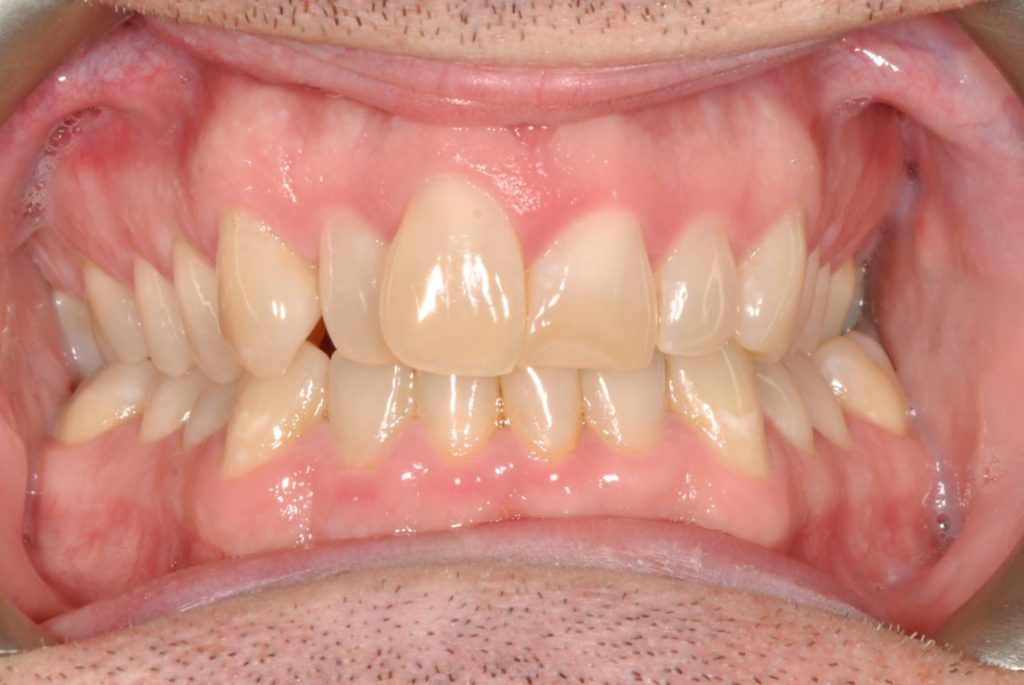
Here is an adult with crowding and excessive wear on his upper left central incisor. Note the edge of the central incisors are just about level, but the gumlines between these teeth are NOT level. We proposed correction of the worn tooth, but the patient did not know if he wanted to pursue the correction at this time. We stuck with Invisalign’s treatment plan to keep the front teeth at the same level. Take a look at the result below:
Invisalign Software Correction (the only tool for a Non-Orthodontist)
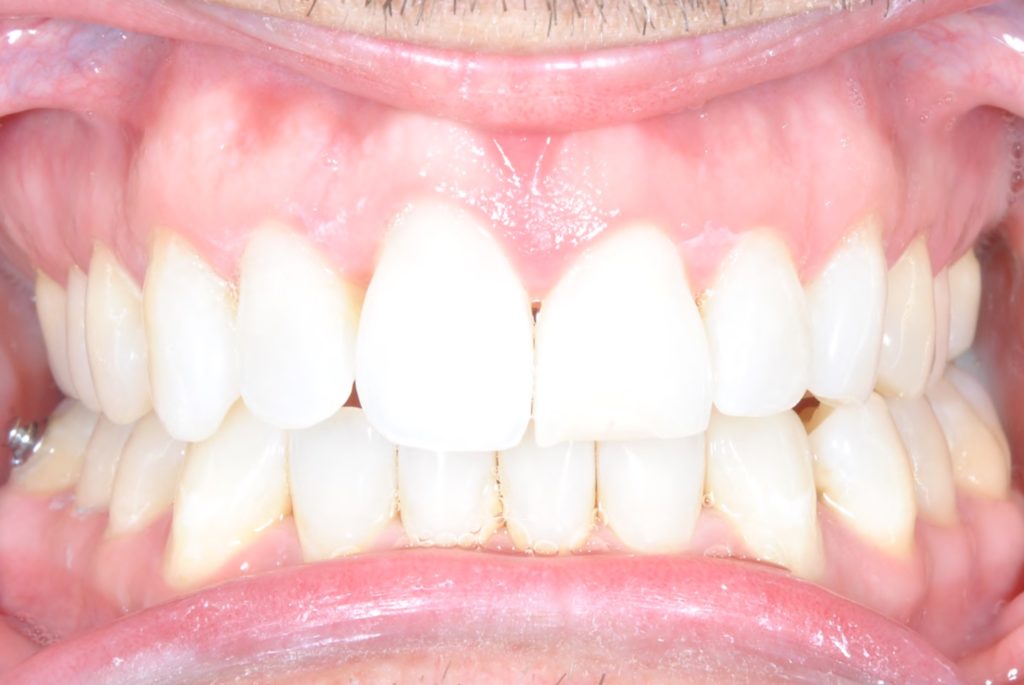
After the first round of Invisalign treatment, we see the teeth are straight. It is an acceptable result, but with our experience, we knew we could improve this result with our proposed treatment plan. The patient elected to fix the discrepancy between his central incisors, and to address the dark triangle that we anticipated. We set out to correct the worn down central incisor and set the gumlines straight with a second set of aligners.
Olson Orthodontics End Result
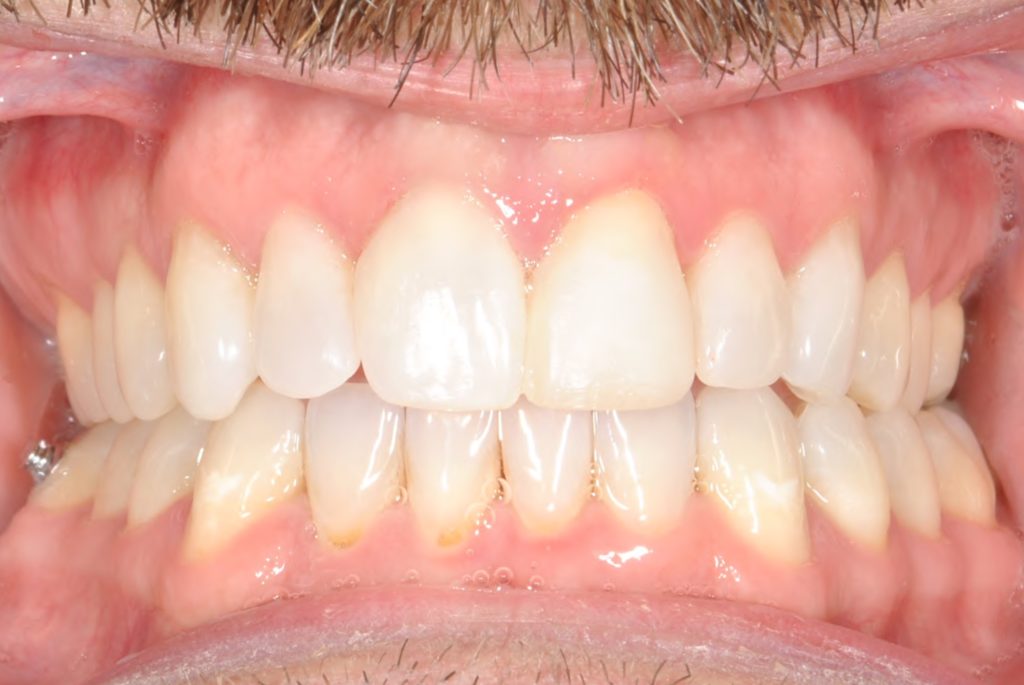
Here is the final result. After positioning the upper left central incisor in it’s CORRECT position, his dentist was able to build up the tooth with composite (white filling material) to fix the short edge. The dentist also built up the area where a dark triangle had formed. Overall, the dentist did a nice job, and our patient finished with an amazing smile.
Before and After
